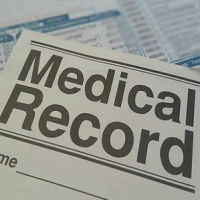Electronic health record (EHR) systems were supposed to improve the documentation process and retrieval of patient information to help with diagnostic and treatment decisions. Instead, EHRs became a source of physician discontent and burnout. Most doctors hate EHRs, and it isn’t clear that they make patients any better off either.
Now, experts say the same record systems can be reconfigured to achieve their original promise. EHRs can be restructured from mere digital remakes of their old pen and paper ancestors into platforms that allow doctors to "subscribe” to their patients’ clinical information to receive real-time updates when an action is required, similar to social media feeds and notifications, according to researchers from Penn Medicine's Center for Health Care Innovation.
The researchers note how automation has brought important benefits to other industries. "When financial services went digital — largely replacing human tellers, paper statements, and checkbook balancing — both bankers and customers embraced the change. Digital transformations in the travel, entertainment, and retail settings were similarly welcomed. But not in healthcare," the researchers write.
The Center for Health Care Innovation is made up of a team of hybrid doctor-developers. These researchers/developers say the problem is that current EHRs merely digitised what was already in paper form.
"The few adaptations made to the new digital environment prioritised billing and administrative tasks over clinical ones. In the opposite of typical design processes that emphasise the user experience, doctors became the technicians working for the built system. The result was that both documentation and data retrieval became burdensome tasks," the researchers explain.
They point to several examples implemented within the University of Pennsylvania Health System that reveal how record systems can be reconfigured into subscription services.
For one, receiving important patient information could depend less on physicians remembering to search the chart. For safety reasons, Penn established automatic medication expiration dates for antibiotics and antiepileptics for inpatients, for instance, but the system initially required physicians to remember when to renew the expiring prescriptions. As a result, medications were not ordered 10 percent of the time because physicians didn't check the chart in time or notice the need for renewal. To address this, the researchers piloted a system that allowed clinicians to subscribe to notices about their patients’ medication expirations, and the number of missed doses was cut by one third.
The notification system, which uses a HIPAA compliant messaging platform, also shortens the lag time between when information becomes available and when it's used. An older approach at Penn waited until morning rounds were over to evaluate whether patients on mechanical ventilators (breathing machines) in the intensive care units could breathe without assistance. Such evaluation involved gathering information from multiple parts of the patient record.
"Taking advantage of the digital information already in the electronic records allowed us to automate those evaluations. Combining that automation with a subscription service alerting doctors and respiratory therapists meant that patients were weaned from the ventilator an average of a half day earlier, significantly speeding their recovery and decreasing ICU costs," according to the researchers.
Push notification services can filter what's important and relevant, just as news feeds and alerts are managed on smart phones. That requires that systems be carefully designed to reduce the risk of alert fatigue, the researchers point out.
Clinicians see patients (and therefore think about them) either in an outpatient office or in a hospital bed. Still, they are responsible for patients even when they’re not right in front of them. As such, the researchers extended the subscription concept to develop a dashboard permitting a kind of SWAT team of clinicians to track the highest patient users of care – so called “superutilisers.” They collected details about how to communicate with the patient, engage with the family, and coordinate appropriate social services, and when these patients hit the emergency room, the team was alerted by the dashboard.
That kind of information in the moment of intervention helped the team take a comprehensive, not episodic, approach to manage this high-risk population across visits, the researchers say. As a result, repeat hospital admissions and total hospital days were reduced by 67 percent and 56 percent, respectively.
Image Credit: Pixabay
Latest Articles
patient information, electronic health records, EHRs
Disappointing and time-consuming, can EHRs be made useful?



























